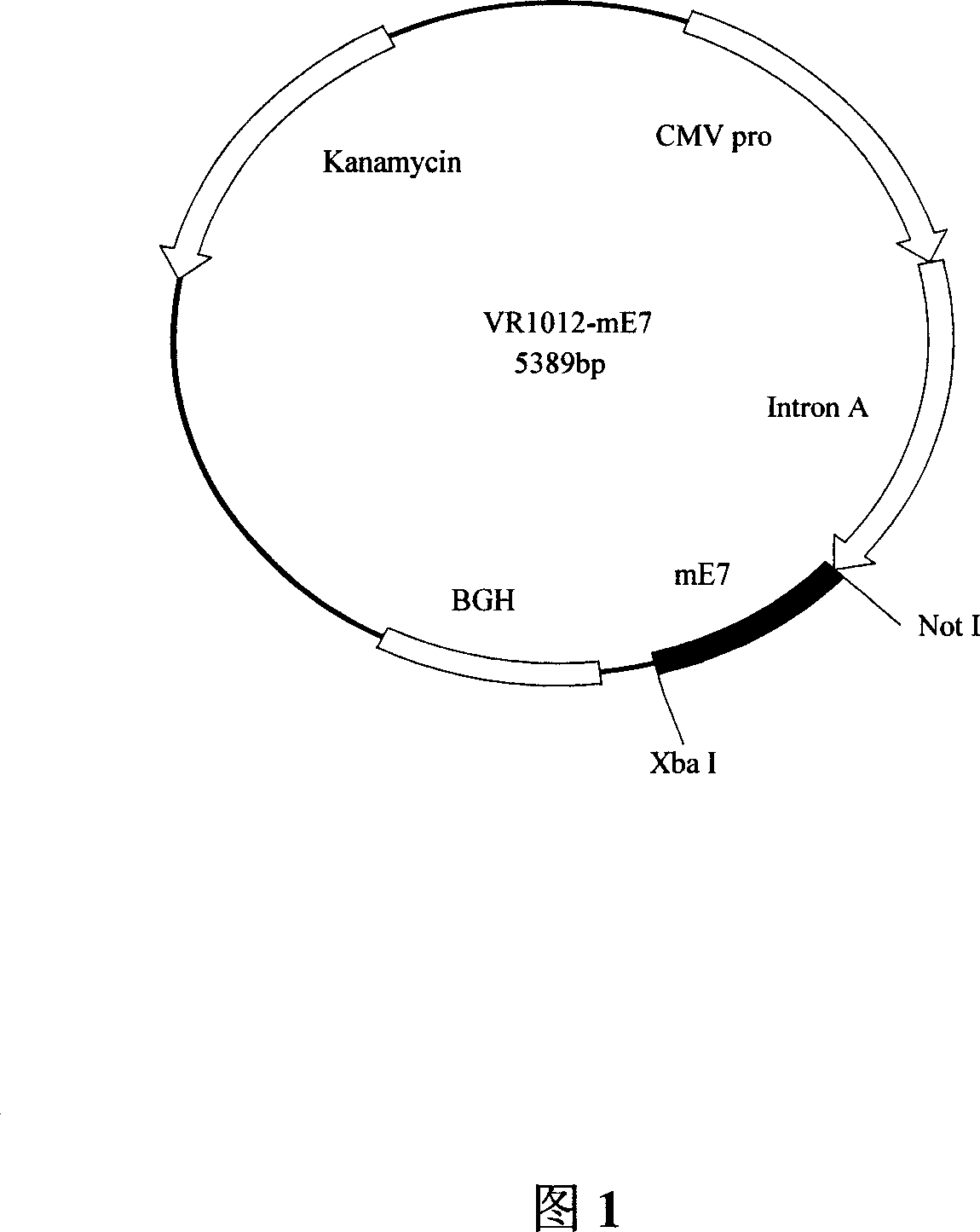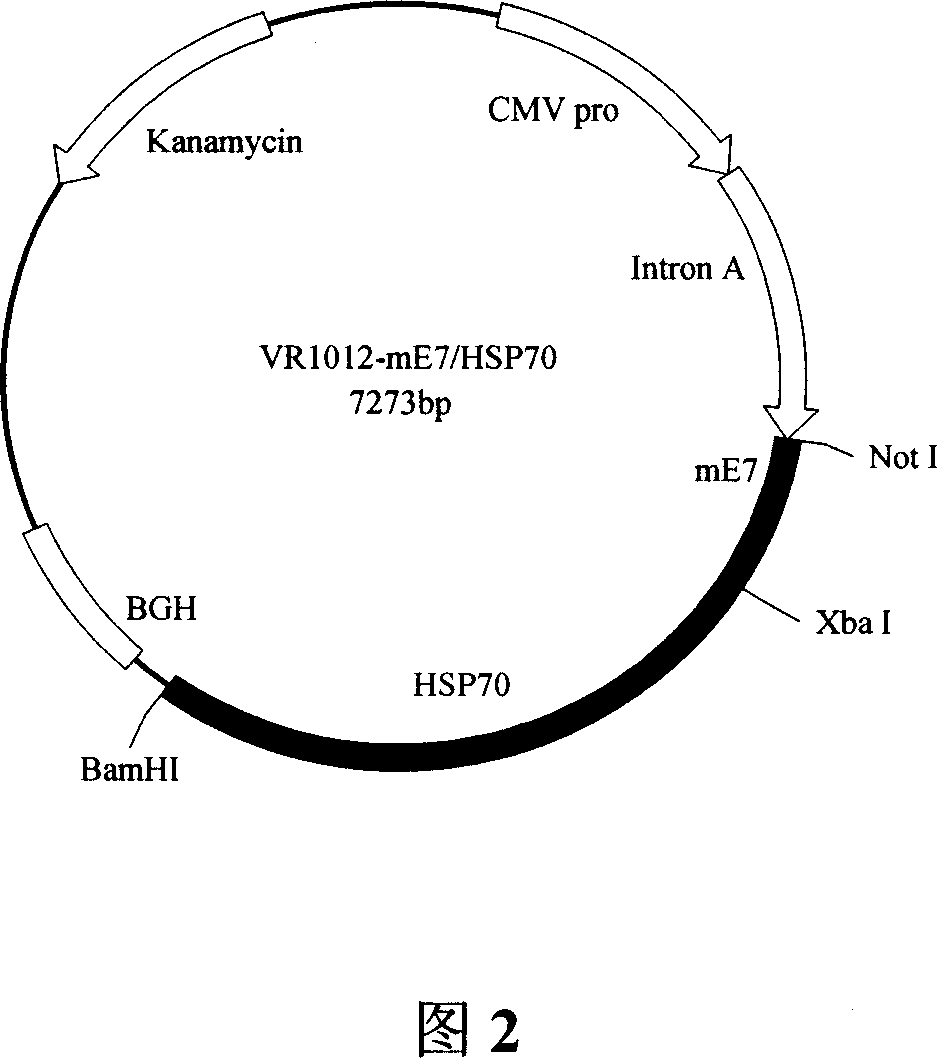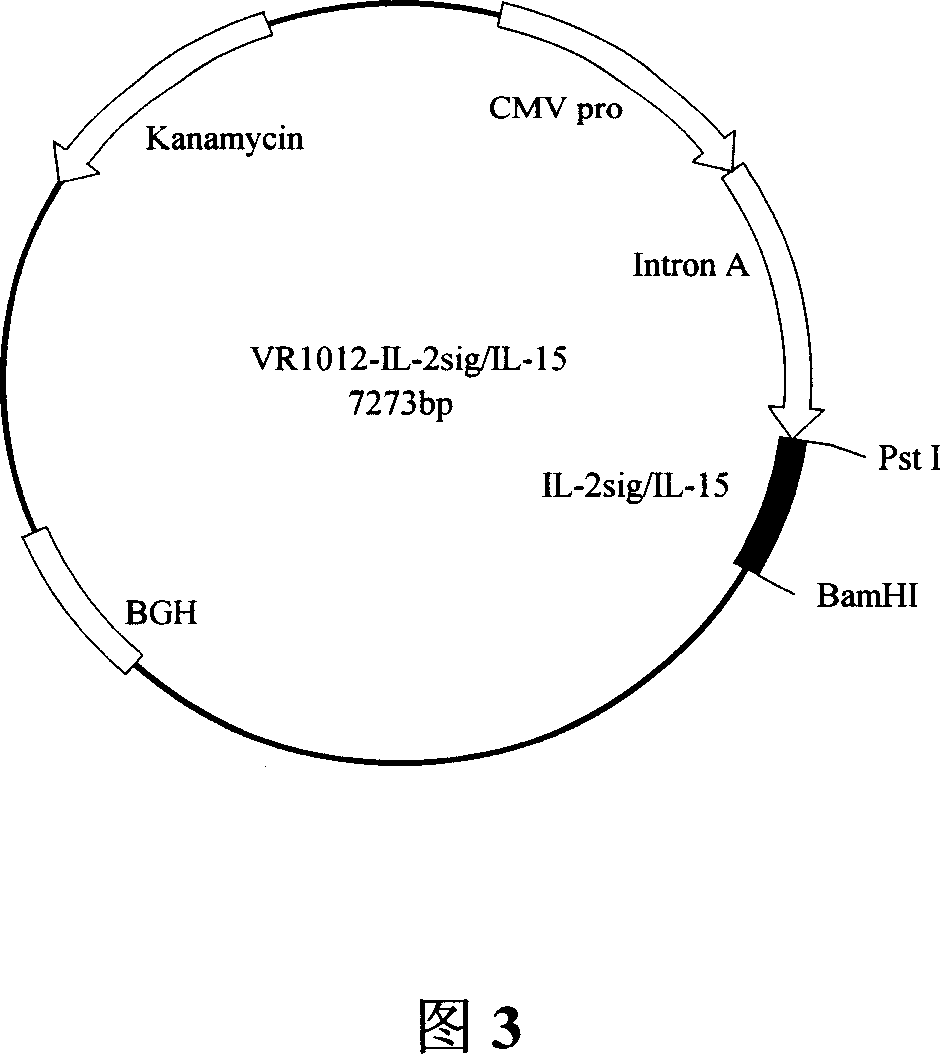Human papilloma virus 16 type DNA vaccine and gene adjuvant and its application
A DNA vaccine, gene technology, applied in recombinant DNA technology, DNA/RNA fragments, applications, etc., can solve problems such as uncomfortable vaccines, difficult immune protection reactions, etc.
- Summary
- Abstract
- Description
- Claims
- Application Information
AI Technical Summary
Problems solved by technology
Method used
Image
Examples
Embodiment 1
[0025] Embodiment 1. Transformation method of antigen gene mE7 gene:
[0026] Obtain the wild-type human papillomavirus type 16 E7 gene sequence (HPV16E7) known to those skilled in the art from the Gene Bank, and then based on the HPV16E7 gene, perform multiple transformations on it at the same time: first, perform multiple loci on the E7 gene site-directed mutation, introducing two point mutations C61G and C93G in the zinc finger binding region of the E7 gene; introducing three point mutations in the Rb binding region DLYCYEQ to mutate DLYCYEQ into DGYGYGQ, and then rearrange the E7 gene after "cutting" (Gene shuffling), choose two cutting points, one is located between the two serines (31S / 32S) at the recognition site of E7 protein kinase, and the other is located at position 60 in the first zinc finger binding region of E7 protein Between the 61st amino acid (60K / 61C), the E7 gene is "cut" into three segments, which are named a, b, and c in sequence, and then rearranged acc...
Embodiment 2
[0027] Embodiment 2. Construction method of recombinant mE7 expression plasmid
[0028] The HPV16E7 gene modified in Example 1 was named mE7 and has the sequence of SEQ ID NO.1, and the cloning plasmid Puc-mE7 containing the mE7 gene was obtained by gene synthesis. According to the strategy shown in Figure 1, the mE7 gene was recombined into the VR1012 eukaryotic expression plasmid: first, the upstream primer was designed according to the mE7 gene sequence: mE7-5': CGAGTCGTGCGGCCGCCACCATGGATCTGC and the downstream primer mE7-3': GCTCTAGAGCTTAGGTAGTCTCGGGCTGCAG. The 5' and 3' ends of the upstream and downstream primers were designed with NotI and XbaI restriction sites, respectively. The mE7 gene was amplified by PCR using the Puc-mE7 plasmid as a template. The reaction conditions were: pre-denaturation at 95°C for 300 s, and then 25 cycles of amplification reactions: denaturation at 94°C for 60 s, renaturation at 60°C for 60 s, extension at 72°C for 60 s, and finally Extend a...
Embodiment 3
[0029] Example 3. Construction method of recombinant mE7 / HSP70 fusion antigen gene expression plasmid
[0030] According to the strategy shown in Figure 2, the mE7 / HSP70 gene was recombined into the VR1012 eukaryotic expression plasmid: in order to obtain the fusion antigen gene mE7 / HSP70 of the mE7 gene and the mycobacterium tuberculosis heat shock protein gene HSP70, first construct the mE7 gene without the stop codon The specific steps are as follows: design the upstream primer according to the mE7 gene sequence: mE7-5': CGAGTCGTGCGGCCGCCACCATGGATCTGC and the downstream primer mE7-3'N: GCTCTAGAGCGGTAGTCTCGGGCTGCAG, the 5' end and the 3' end of the upstream and downstream primers are respectively designed with NotI and XbaI enzymes cut site. According to the method described in Example 2, the mE7 expression vector VR1012-mE7(N) without the stop codon was obtained, which was used to construct the mE7 / HSP70 fusion gene. Then, according to the Mycobacterium tuberculosis HSP70 ...
PUM
 Login to View More
Login to View More Abstract
Description
Claims
Application Information
 Login to View More
Login to View More - R&D
- Intellectual Property
- Life Sciences
- Materials
- Tech Scout
- Unparalleled Data Quality
- Higher Quality Content
- 60% Fewer Hallucinations
Browse by: Latest US Patents, China's latest patents, Technical Efficacy Thesaurus, Application Domain, Technology Topic, Popular Technical Reports.
© 2025 PatSnap. All rights reserved.Legal|Privacy policy|Modern Slavery Act Transparency Statement|Sitemap|About US| Contact US: help@patsnap.com



